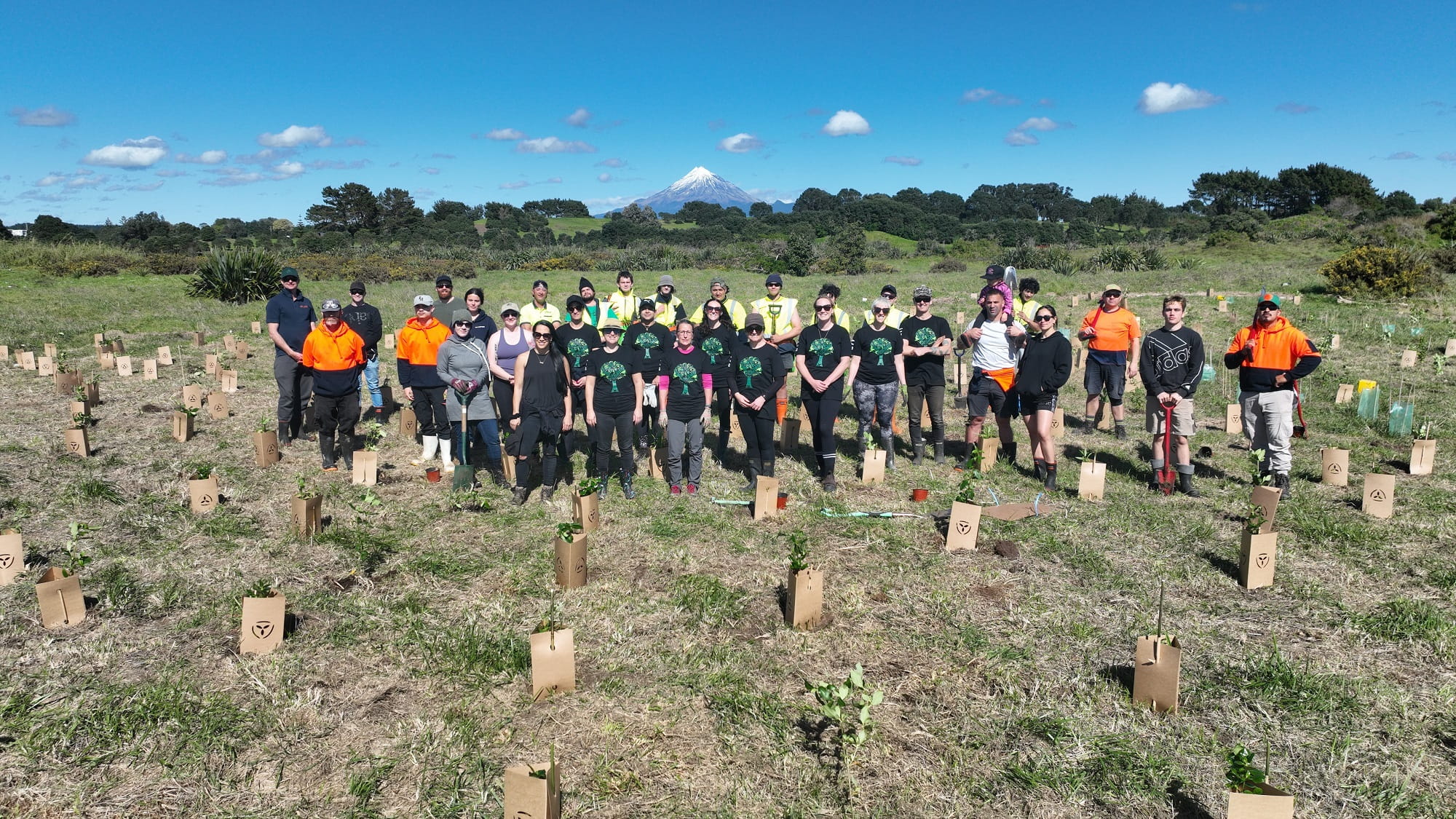Helping restore native coastal biodiversity

An area of land at the Waiwhakaiho River mouth is being transformed into a native habitat in a partnership between Ngāti Tāwhirikura hapū and Powerco-led planting initiative, Replant for Tomorrow.
The coastal whenua on the Bell Block side of the Te Rewa Rewa Bridge has been largely covered in introduced kikuyu. It’s the hapū’s goal to reintroduce biodiversity to the land.
“Where we’re planting, right on this coastal strip, creates an environment for coastal birds, a bit of sanctuary for when the weather isn’t that great,” Ngāti Tāwhirikura hapū representative Dylin Bailey says.
“The big aspiration – the big dream – is to have a 50-metre buffer zone on either side of the awa (river) – an ecological corridor from the mountain to the sea. It’s to bring back biodiversity – the birds, the insects, the manu, the inanga – everything that relies on that whole ecosystem to thrive.”
Powerco, which partners with Wild for Taranaki and Asplundh in the Replant for Tomorrow initiative, has donated 2,500 trees for the site. More than 30 volunteers from Powerco, Wild for Taranaki and Asplundh recently joined hapū members to plant native Taupata, Koromiko and Karamu, and protect them from predators by installing biodegradable cardboard surrounds secured by bamboo.
Oli Vincent, Powerco Head of Stakeholder Relations and Corporate Communications, says the company is committed to sustainability.
“Since Replant for Tomorrow began in 2020, we’ve planted over 10,000 trees across three different locations in Taranaki.
“Replant for Tomorrow is more than a tree-planting initiative. It’s our way of helping to redress the fact that in order to help keep our customers’ power supply reliable and safe, we sometimes need to remove trees if they are too close to our power poles and lines,” he says.
Trees cause around a quarter of all power cuts on Powerco’s electricity network each year – that’s about 70,000 people losing power. When overgrown, trees interfere with power lines and make it difficult for our crews to restore power. Also, in high winds and storms, branches blowing into power lines cause power outages.
“We plant new trees in our communities, well away from power lines, to help bring back the environmental balance,” Oli Vincent says.
The Waiwhakaiho Restoration project was designed by Ngāti Tawhirikura hapū to restore and revitalise the habitats of its taonga species along the Waiwhakaiho River catchment. The intention is to encourage the return of these species. It’s also to introduce and enhance the connection of whānau and uri (descendants) to their whenua (land).
The project area extends from Taranaki Maunga, 30km to the sea within the Waiwhakaiho River catchment.
The project employs 11 kaimahi (workers, many who whakapapa to Ngāti Tawhirikura) to complete restoration work, including eco-sourcing and growing native plants, fencing, planting, weed control and pest eradication to improve migratory fish flow. This work also enables the hapū to build on its research into the history of the Waiwhakaiho River catchment and its important mahinga kai (food gathering) locations.
Click here for more information about Replant for Tomorrow in Taranaki.

